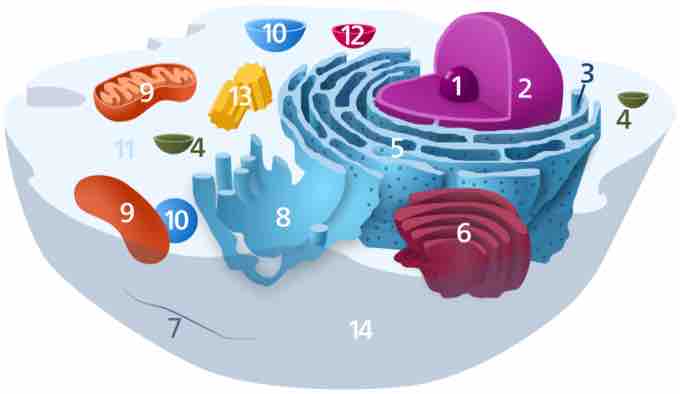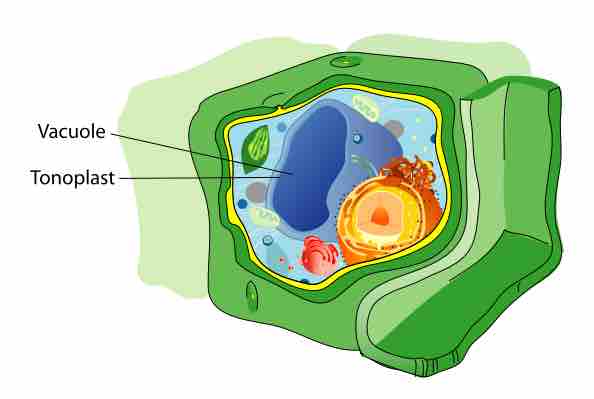Vesicles and vacuoles are membrane-bound sacs that function in storage and transport. Other than the fact that vacuoles are somewhat larger than vesicles, there is a very subtle distinction between them: the membranes of vesicles can fuse with either the plasma membrane or other membrane systems within the cell. The membrane of a vacuole does not fuse with the membranes of other cellular components. Additionally, some agents within plant vacuoles, such as enzymes, break down macromolecules.
Vesicles
A vesicle is a small structure within a cell, consisting of fluid enclosed by a lipid bilayer. Vesicles form naturally during the processes of secretion (exocytosis), uptake (phagocytosis) and transport of materials within the cytoplasm. Alternatively, they may be prepared artificially, in which case they are called liposomes. Vesicles can fuse with the plasma membrane to release their contents outside the cell. Vesicles can also fuse with other organelles within the cell.

Animal Cell
In this animal cell illustration #4 denotes a vacuole.
Vesicles perform a variety of functions. Because they are separated from the cytosol, the inside of a vesicle can be different from the cytosolic environment. For this reason, vesicles are a basic tool used by the cell for organizing cellular substances. Vesicles are involved in metabolism, transport, buoyancy control, and enzyme storage. They can also act as chemical reaction chambers.
Lysosomes
Animal cells have a set of organelles not found in plant cells: lysosomes. Lysosomes are a cell’s “garbage disposal.” Enzymes within the lysosomes aid the breakdown of proteins, polysaccharides, lipids, nucleic acids, and worn-out organelles. These enzymes are active at a much lower pH than that of the cytoplasm. Therefore, the pH within lysosomes is more acidic than the pH of the cytoplasm. Many reactions that take place in the cytoplasm could not occur at a low pH, so again, the advantage of compartmentalizing the eukaryotic cell into organelles is apparent.
Vacuoles
Vacuoles are an essential component of plant cells. If you look at the figure below, you will see that plant cells each have a large central vacuole that occupies most of the area of the cell. The central vacuole plays a key role in regulating the cell’s concentration of water in changing environmental conditions, and houses the digestive processes.
Have you ever noticed that if you forget to water a plant for a few days, it wilts? That’s because as the water concentration in the soil becomes lower than the water concentration in the plant, water moves out of the central vacuoles and cytoplasm. As the central vacuole shrinks, it leaves the cell wall unsupported. This loss of support to the cell walls of plant cells results in the wilted appearance of the plant.

Plant Cell Structure
The Central Vacuole in a typical plant cell is quite large and is surrounded by the tonoplast or vacuolar membrane.
The central vacuole also supports the expansion of the cell. When the central vacuole holds more water, the cell gets larger without having to invest a lot of energy in synthesizing new cytoplasm.
Contractile vacuoles are found in certain protists, especially those in Phylum Ciliophora. These vacuoles take water from the cytoplasm and excrete it from the cell to avoid bursting due to osmotic pressure.